|
Starting any new thing can be an intimidating task, and dipping one's toe into the world of bird watching is no different. With over 2,000 bird species in North America and nearly 18,000 bird species in the world, birding can definitely seem like an overwhelming hobby to start. I found myself in that camp nearly a year ago when I was in the middle of the Okavango Delta studying for an exam that included being able to recognize 40 different bird species both by sight and by sound. Prior to my preparation for the trip, I had heard of maybe three of the bird species that we had to recognize -- not very many at all. I spent the first week trying to figure out how the heck I was going to learn the names, appearances and calls of all these birds while simultaneously learning the material from fourteen other modules in a month's time. I considered using Quizlet but felt like it would take away from the whole unplugged, middle-of-the-bush vibe. After toying with some ideas, I finally landed on a method that was incredibly successful for me and my learning style. I'll be sharing it with you, as I've gone on to apply it even back home as a growing birder.
After I made my first list I immediately made another list, trying to recall the different patterns that I'd recognized. I remembered more birds but still had to call upon the aid of my master list. And then I did it again and again and again and again, literally filling pages and pages of my notebook with a repeating list of 40 prominent birds of Northern Botswana. As the days went on and I continued making lists, it became easier and easier to recall the birds. *Side note: I'm a HUGE proponent of writing things down instead of typing them — a quick Google search of 'writing vs typing memory' will result in numerous scholarly articles highlighting the benefits of handwriting when concerning memory.* Even upon returning to the States, I wrote the list over and over again on anything — napkins, Band-Aid wrappers, planner margins, notebooks, scrap paper, etc. — in order to remember the names of these birds (and I still do). So how do you apply this practically? Wherever you live, Google common birds in your region. For me, I Googled 'common birds of North Carolina' and developed a list of 40+ birds. Write the list down by hand (40 really isn't too scary of a number, I promise). Study it. Read it. See what birds you might already know and what birds you're completely unfamiliar with. Find patterns in your list. How many raptors/owls/wrens/water birds/etc. are there? Do any birds have a color in their name? Are there any birds with similar names? Ask questions. Find silly patterns that help the names stick and solidify in your mind. And then write the list down again. And again. And again. Do it once during breakfast, maybe again at lunch, take a brain break from your primary occupation to jot down the list again, think about the list on your way to/from work, etc. Anytime you feel like it, try to recall the list. The more often you do it, the quicker you'll get it down.
Once you start paying more attention to birds, the easier it becomes. You start to notice differences in body types even if you see two birds of a similar color. Take note of sexual dimorphism, that is, the differences in appearance between males and females of the same species, such as in color, shape, size, and structure, that are caused by the inheritance of one or the other sexual pattern in the genetic material. For example, male cardinals are characteristically a brilliant red whereas females are a light brown with only tinges of red. In other species, such as the Florida scrub jay, both male and female morphs appear the same. There can also be differences when it comes to juveniles and adult size and plumage but, again, the more you bird, the more you'll become familiar with these differences. Note that this step doesn’t necessarily have to come after you've FINALLY memorized your list of birds. You can begin associating names with pictures, as it may be helpful while you're trying to memorize your list. The biggest point of getting a memorized list going is just to help you not jump into birding blindly. Associate each one with its proper call. Ahh, now to bird calls. I'm not going to lie, this is the most difficult part of the learning process for me, especially if I'm trying to learn the calls on my own. I'm a huge proponent of letting others help you, particularly when it comes to identifying bird calls. Personally, I have a fear that if I'm studying calls on my own I'll incorrectly learn and identify a call, which would eventually result in me having to unlearn the incorrect call and relearn the proper one (that's part of the reason I started the Charlotte Nature Journal Club, so that people can meet and learn about different aspects of nature together). Anyways, back to bird calls. In Botswana I learned that there is a German word — eselsbrücke — that literally translates into "donkey bridge" and refers to any mnemonic device or phrase that is used to remember facts or information. A very common example in English is "PEMDAS" (Parentheses, Exponents, Multiply, Divide, Addition, Subtraction). Applying this to birding, you hear the call and try to see if it reminds you of anything. Taking a Senegal coucal, the donkey bridge used to remember its call is that it sounds like a happy little ghost laughing. It's silly, but I haven't forgotten the call of this bird. And in the States, a tufted titmouse, for example, sounds like it's whistle-ly saying "Peter-Peter" over and over again. Whatever donkey bridge works for you works for you, and you should share yours with other birders because it may help them remember that call too. If you're trying to learn these bird calls with a group of people, circle up and have a bird call brainstorming session: play different the bird calls and try to come up with a donkey bridge for each of them. Do be sure to note that some birds have multiple calls that you may want to learn too. The best way to get better at something is to start doing it, and this is how I got my foot in the door to birding. There are many more aspects to birding, such as learning behavior and identifying birds in the field, but both of those will come as you begin reading more about birds and spending more time with them. Allow yourself to be curious and ask questions. Do research. When you're in the field, take note of observations you see and questions that arise. Talk to others about what you saw, as they may be able to help further develop your understanding of what was observed. For both of these tasks, I find the Audubon Bird Guide App to be incredibly helpful. Each bird species is fairly thoroughly profiled in description, songs and calls, range, migration, conservation status, discussion, habitat, feeding behavior, diet, nesting and eggs. Intentionally reading through birds' profiles will help you learn more about them. You may also want to consider a field guide to the behavior of birds in your region. I don't have any recommendations for a specific guide, but a quick Google search will bring up a few options.
When you're trying to identify birds in the field, use GISS (General Impression of Shape and Size) as a general rule of thumb for noting different characteristics:
There's a feature on the Audubon Bird Guide App that walks you through each of these steps as you're trying to ID a bird, but I think they are important for you to know for yourself if you're away from your phone or if you have to make note of a bird very quickly. While it may seem like a lot to note, it definitely becomes more natural the more you do it. Just like any new thing, birding takes practice. Get out there and walk around. Use your list to start learning and identifying birds in your area. As you get out more, you'll find more birds that you haven't seen before or aren't familiar with. As you begin to identify those, they'll stick in your mind too! Learning is a very fluid process that looks different for a lot of people, so there is no "right way" to start birding. I just found this method to be incredibly successful for me in deterring the feeling of being overwhelmed. Now get out there and start birding! As always, let me know if this was helpful for you or if you have any recommendations of your own!
1 Comment
Marie
11/24/2020 09:12:23 pm
Hi Kerrington!
Reply
Leave a Reply. |
1 Thess. 2:2"...but with the help of our God we dared to tell His gospel in the face of strong opposition." Categories
All
Archives
April 2023
|
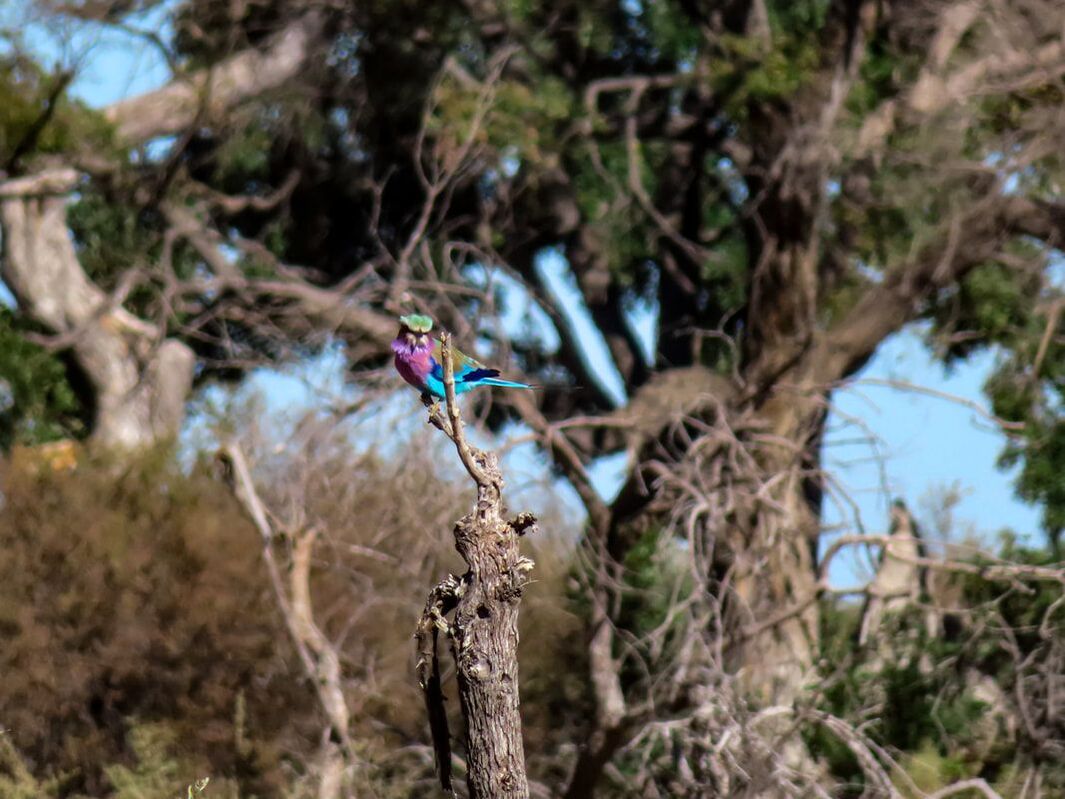
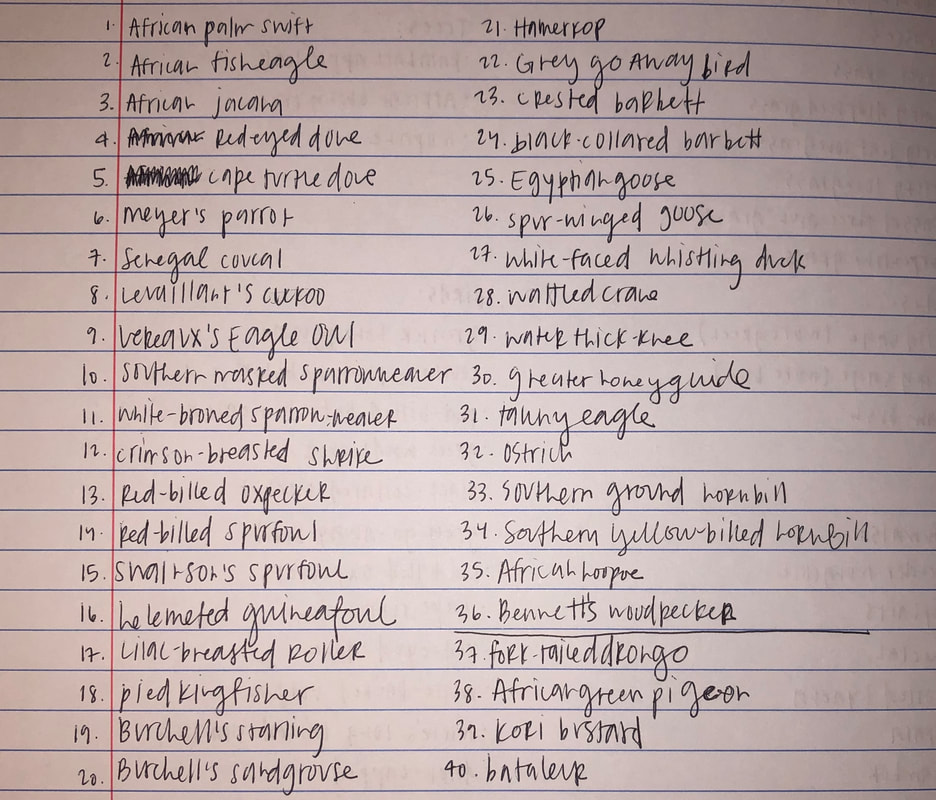
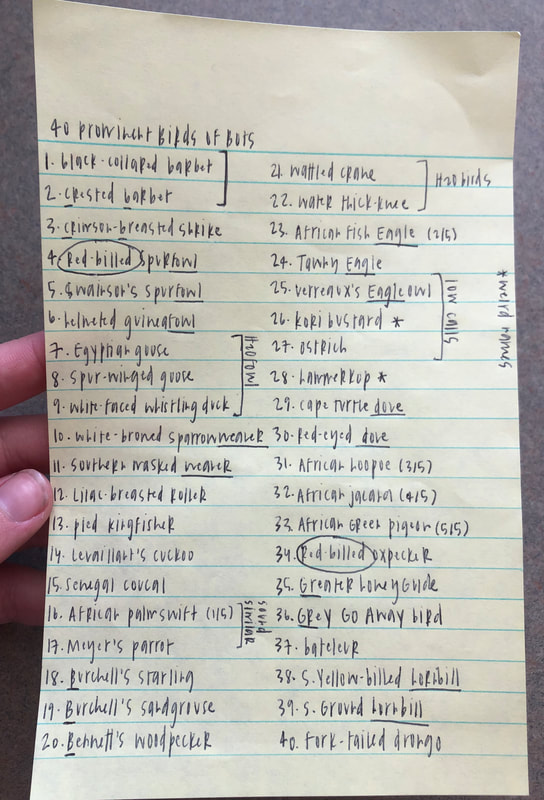
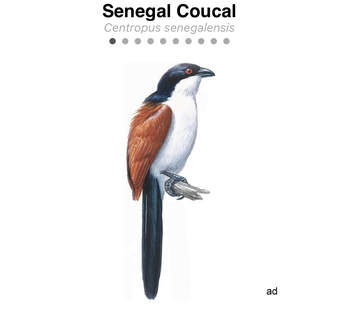
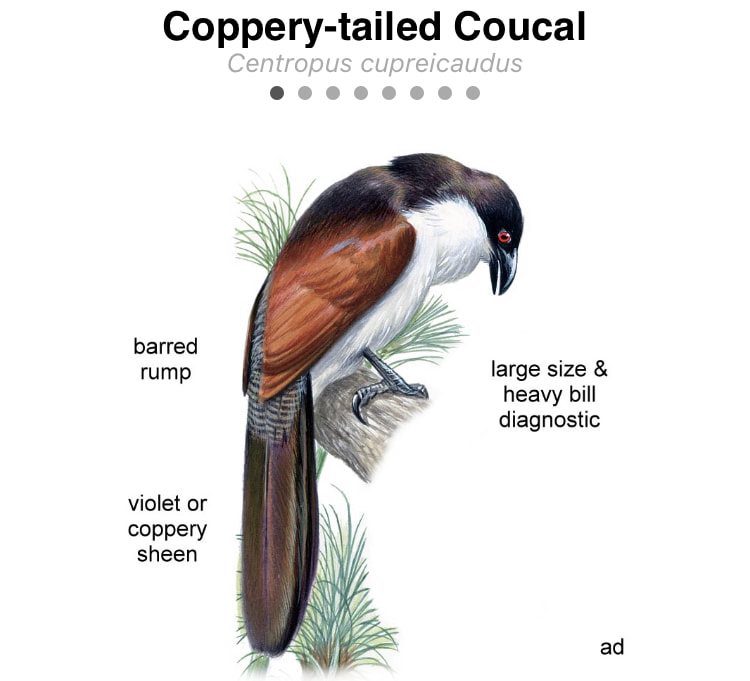
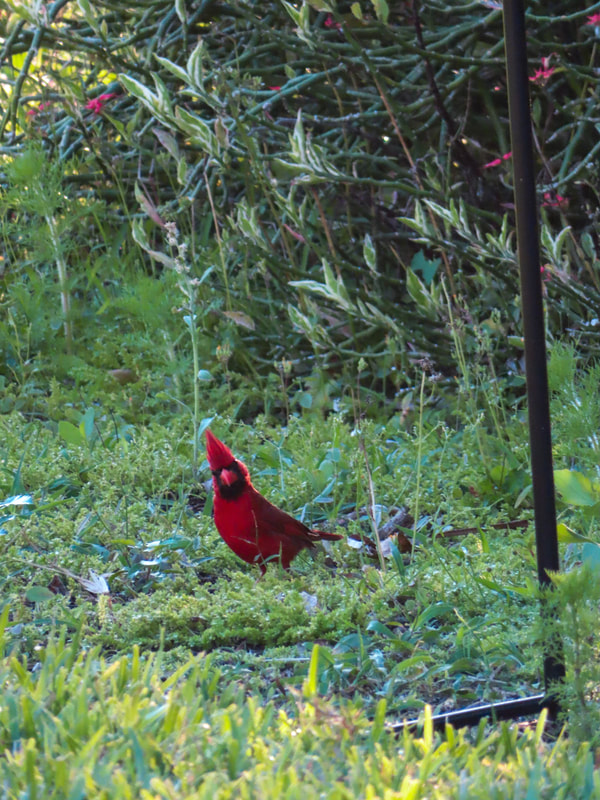
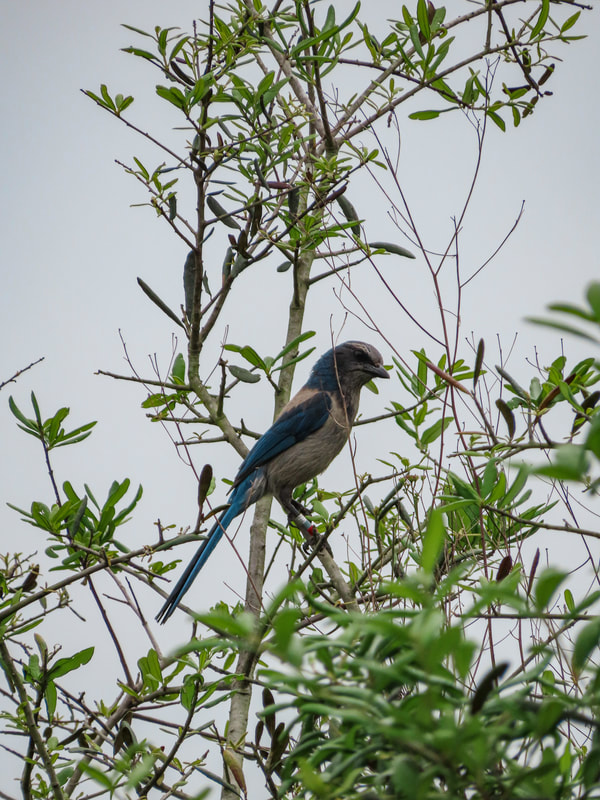

 RSS Feed
RSS Feed
